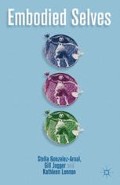Abstract
The debate over the identity category of women that emerged in 1970s feminist theory has recently morphed into a new debate over the best way to understand sex identity in relationship both to gender identity and to sexuality. Both the meanings and the relationships between the categories of sex, gender and sexuality are under contestation in these debates, as is indeed the ability to separate these terms. The transgender movement has disrupted whatever slight consensus there was over how to understand any of these concepts. Almost no one seems to want binary formulations of sex, gender or sexuality — binaries like male/female, masculine/feminine, and gay/straight — and the continuum models that try to conceptualise the fluidity of identity types are similarly criticised for maintaining binary poles between which a continuum can be strung. Even Derrida’s dream of an open set of endless sexes, put forward as the alternative to Irigaray’s two-term sexual difference, has been effectively critiqued from within the camp of feminist Derrideans (see Irigaray 1985; Grosz 1995: 77). So where do we go from here?
Access this chapter
Tax calculation will be finalised at checkout
Purchases are for personal use only
Preview
Unable to display preview. Download preview PDF.
References
Bender, L. (2006) ‘“To Err is human”: ART Mix-ups: A labor-based relational proposal’, The Journal of Gender, Race, and Justice, 9: 443–508.
Butler, J. (1994) ‘Against proper objects’, Differences: A Journal of Feminist Cultural Studies (Summer–Fall), 6(2–3): 1–27.
Calhoun, C. (2003) Feminism, the Family, and the Politics of the Closet: Lesbian and Gay Displacement. New York: Oxford University Press.
De Beauvoir, S. (1989) The Second Sex, trans. H.M. Parshley. New York: Random House.
Eze, E. (ed.) (1997) Race and the Enlightenment. Cambridge, MA: Blackwell Publishers.
Feinberg, L. (1997) Transgender Warriors: Making History from Joan of Arc to Dennis Rodman. Boston, MA: Beacon Press.
Fine, C. (2010) Delusions of Gender: How Our Minds, Society, and Neurosexism Create Difference. New York: W.W. Norton.
Firestone, S. (1970) The Dialectic of Sex: The Case for Feminist Revolution. New York: William Morrow.
Frye, M. (1996, Summer) ‘The necessity of differences: constructing a positive category of women’, SIGNS: Journal of Women in Culture and Society, 21(3): 991–1010.
Grosloguel, R. (1999) ‘“Cultural racism” and colonial Caribbean migrants in core zones of the capitalist world economy’, Review: Fernand Braudel Center, XXII(4): 409–434.
Grosz, E. (1995) Space, Time and Perversion: Essays on the Politics of Bodies. New York: Routledge.
Hrdy, S.B. (1999) Mother Nature: Maternal Instincts and How They Shape the Human Species. New York: Ballantine Books.
Irigaray, L. (1985) This Sex Which Is not One, trans. Catherine Porter. Ithaca, NY: Cornell University Press.
Kitcher, P. (1999) ‘Race, Ethnicity, Biology, Culture’, in Harris, L. (ed.), Concepts of Racism. New York: Prometheus Books: 87–117.
Plato (2005) “Plato: Collected Dialogues”, in Hamilton, E. and Cairns, H. (eds), The Collected Works, trans. Lane Cooper. Princeton, NJ: Princeton University Press: 693 (Republic d–e Book V).
Roughgarden, J. (2004) Evolution’s Rainbow: Diversity Gender and Sexuality in Nature and People. Berkeley, CA: University of California Press.
Warnke, G. (2007) After Identity: Rethinking Race, Sex, and Gender. Cambridge: Cambridge University Press.
Wittig, M. (1992) The Straight Mind and Other Essays. Boston, MA: Beacon Press.
Young, I.M. (1997) Intersecting Voices: Dilemmas of Gender, Political Philosophy, and Policy. Princeton, NJ: Princeton University Press.
Zack, N. (2005) Inclusive Feminism: A Third Wave Theory of Women’s Commonality. Lanham, MD: Rowman and Littlefield.
Zuk, M. (2002) Sexual Selections: What We Can and Cannot Learn from Animals. Berkeley, CA: University of California Press.
Editor information
Editors and Affiliations
Copyright information
© 2012 Linda Martín Alcoff
About this chapter
Cite this chapter
Alcoff, L.M. (2012). Gender and Reproduction. In: Gonzalez-Arnal, S., Jagger, G., Lennon, K. (eds) Embodied Selves. Palgrave Macmillan, London. https://doi.org/10.1057/9781137283696_2
Download citation
DOI: https://doi.org/10.1057/9781137283696_2
Publisher Name: Palgrave Macmillan, London
Print ISBN: 978-1-349-33534-3
Online ISBN: 978-1-137-28369-6
eBook Packages: Palgrave Social Sciences CollectionSocial Sciences (R0)

